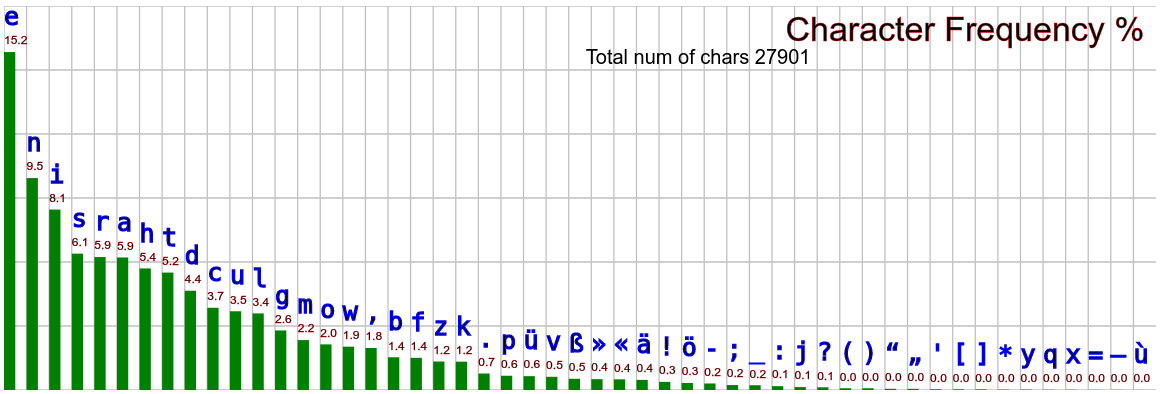German Character Frequency
German Character Frequency

〔see Character Frequency Plot〕
| e | 16.4 |
| n | 9.78 |
| s | 7.27 |
| r | 7.00 |
| i | 6.55 |
| a | 6.52 |
| t | 6.15 |
| d | 5.08 |
| h | 4.58 |
| u | 4.17 |
| l | 3.44 |
| g | 3.01 |
| c | 2.73 |
| o | 2.59 |
| m | 2.53 |
| w | 1.92 |
| b | 1.89 |
| f | 1.66 |
| k | 1.42 |
| z | 1.13 |
| ü | 0.995 |
| v | 0.846 |
| p | 0.670 |
| ä | 0.578 |
| ö | 0.443 |
| ß | 0.307 |
| j | 0.268 |
| y | 0.0390 |
| x | 0.0340 |
| q | 0.0180 |
German Alphabet
The German alphabet is the same as English, with the addition of the following:
Ä
ä,
Ö
ö,
Ü
ü,
ß
The ß is called sharp s. Often it is equivalent to ss. The capital version of ß is ẞ, but it's basically not used.